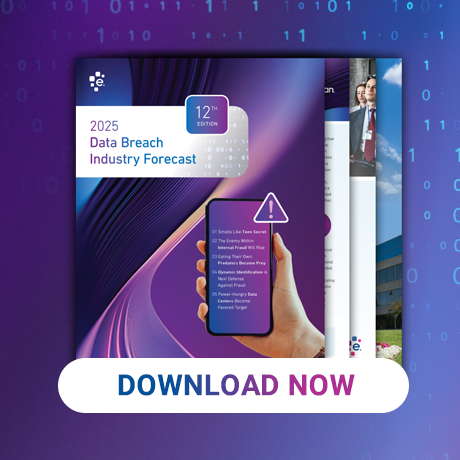
Protecting consumer information is paramount in today’s digital age, especially for financial institutions. With cyber threats on the rise, robust user authentication methods are essential to safeguard sensitive data. This guide will walk you through the various user authentication types and methods, focusing on solutions that can help financial institutions enhance their security measures and protect consumers’ personal information.
Understanding user authentication types
Single-factor authentication (SFA)
Single-factor authentication is the most basic form of authentication, requiring only one piece of information, such as a password. While it’s easy to implement, SFA has significant drawbacks, particularly in the financial sector where security is critical. Passwords can be easily compromised through phishing or brute force attacks, making SFA insufficient on its own.
Two-factor authentication (2FA)
Two-factor authentication uses two different factors to verify a user’s identity. For example, a bank might require a consumer to enter their password and then confirm their identity with a code sent to their mobile device. This method enhances security without overcomplicating the user experience.
Multi-factor authentication (MFA)
Multi-factor authentication adds an extra layer of security by requiring two or more verification factors. These factors typically include something you know (a password), something you have (a token or smartphone), and something you can present with your body, such as a fingerprint or facial scan (biometric data). MFA significantly reduces the risk of unauthorized access, making it a crucial component for financial institutions.
Common authentication methods
Password-based authentication
Passwords are the most common form of authentication. However, they come with challenges, especially in the financial sector. Weak or reused passwords can be easily exploited. Financial institutions should enforce strong password policies and educate consumers on creating secure passwords.
Biometric authentication
Biometric authentication uses unique biological characteristics, such as fingerprints, facial recognition, or iris scans to verify identity. This method is becoming increasingly popular in banking due to its convenience and high level of security. However, a potential drawback is that it also raises privacy concerns.
Token-based authentication
Token-based authentication involves the use of physical or software tokens. Physical tokens, like smart cards, generate a one-time code for login. Software tokens, such as mobile apps, provide similar functionality. This method is highly secure and is often used in financial transactions.
Certificate-based authentication
Certificate-based authentication uses digital certificates to establish a secure connection. This method is commonly used in secure communications within financial systems. While it offers robust security, implementing and managing digital certificates can be complex.
Two-factor authentication (2FA) solutions
2FA is a practical and effective way to enhance security. Popular methods include SMS-based codes, app-based authentication, and email-based verification. Each method has its pros and cons, but all provide an additional layer of security that is vital for protecting financial data.
Many financial institutions have successfully implemented two factor authentication solutions. For example, a bank might use SMS-based 2FA to verify transactions, significantly reducing fraud. Another institution might adopt app-based 2FA, offering consumers a more secure and convenient way to authenticate their identity.
Multi-factor authentication (MFA) solutions
MFA is essential for financial institutions aiming to enhance security. Multifactor authentication solutions can provide multiple layers of protection and ensure that even if one factor is compromised, unauthorized access is still prevented.
Implementing MFA requires careful planning. Financial institutions should start by assessing their current security measures and identifying areas for improvement. It’s crucial to choose MFA solutions that integrate seamlessly with existing systems. Training staff and educating consumers on the importance of MFA can also help ensure a smooth transition.
Knowledge-based authentication (KBA) solutions
What is KBA?
Knowledge-based authentication relies on information that only the user should know, such as answers to security questions. There are two types: static KBA, which uses pre-set questions, and dynamic KBA, which generates questions based on the user’s transaction history or other data.
Effectiveness of KBA
While KBA can be effective, it has its limitations. Static KBA is vulnerable to social engineering attacks, where fraudsters gather information about the user to answer security questions. Dynamic KBA offers more security but can be more complex to implement. Financial institutions should weigh the pros and cons of KBA and consider combining it with other methods for enhanced security.
Enhancing KBA security
To improve KBA security, financial institutions can combine it with other user authentication types, such as MFA or 2FA. This layered approach ensures that even if one method is compromised, additional layers of security are in place. Best practices for knowledge based authentication solutions include regularly updating security questions and using questions that are difficult for others to guess.
Using authentication methods to protect consumer information
Choosing the right authentication methods is crucial for financial institutions to protect consumer information and maintain trust. By understanding and implementing robust authentication solutions like MFA, 2FA, and KBA, banks and financial services can significantly enhance their security posture.
As cyber threats continue to evolve, staying ahead with advanced authentication methods will be key to safeguarding sensitive data and ensuring consumer confidence. Experian’s multifactor authentication solutions can enhance your existing authentication process while reducing friction, using risk-assessment tools to apply the appropriate level of security.
Learn how your organization can provide faster, more agile mobile transactions, risk protection for your business, and security and peace of mind for your consumers.
This article includes content created by an AI language model and is intended to provide general information.


